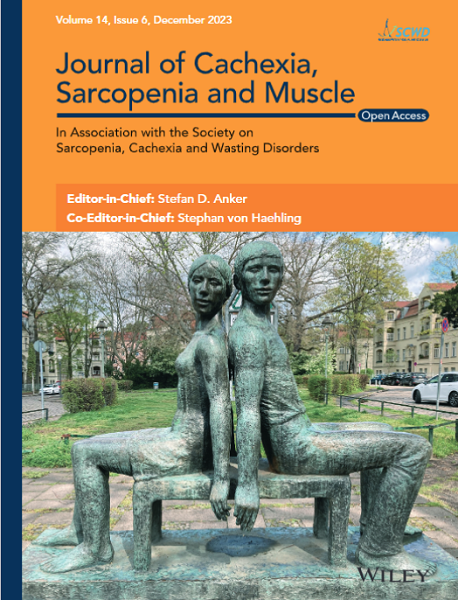Pancreatic Damage in Ovarian Cancer–Associated Cachexia Is Driven by Activin A Signalling
Abstract
Background
Cancer-associated cachexia (CAC) is a severe metabolic disorder characterized by involuntary weight loss, skeletal muscle atrophy and adipose tissue depletion. It is a major contributor to morbidity and mortality in the advanced stages of various cancers. However, the impact of CAC on the pancreas remains largely unexplored.
Methods
We used mice with constitutively active PI3K in oocytes, generated through a Cre-inducible Pik3ca* knock-in allele driven by Gdf9-icre and performed histological and molecular analyses of the pancreas during cachexia development. Additionally, we examined pancreatic changes following ovariectomy and administration of Follistatin 288 (FST288).
Results
Mice that developed cachexia symptoms associated with granulosa cell tumour (GCT) growth exhibited significant pancreatic atrophy compared to controls (Cre+ vs. Cre− at PD83, p < 0.0001), including reduced size of individual acinar cells (102.99 ± 12.19 μm2 vs. 207.94 ± 24.85 μm2 at PD83, p < 0.0001) and acinar units (346.41 ± 169.22 μm2 vs. 1193.59 ± 136.01 μm2 at PD83, p < 0.0001), despite comparable food intake between groups. Acinar cells exhibited a decrease in zymogen granules, reduced amylase expression and diminished amylase activity in both serum (0.29 ± 0.08 vs. 1.41 ± 0.40, p < 0.001) and tissue (0.37 ± 0.14 vs. 1.05 ± 0.29, p < 0.01). In contrast, pancreatic islets remained intact, as evidenced by histological analysis and preserved insulin expression. The pancreas of PD83 Cre+ mice also developed fibrosis and acinar cell death, characterized by elevated expression of collagen IV and α-SMA, and TUNEL-positive signals in acinar cells, respectively. Ovariectomy preserved body weight (2.66 ± 1.30 g for Cre+/OVX vs. 1.60 ± 0.97 g for Cre−) compared to Cre+ mice (−3.66 g) and maintained pancreatic function, suggesting that tumour-derived factors from GCT contribute to the severity of cachexia. Acinar cells showed high expression of ACVR2B, leading to activation of downstream p-SMAD3 signalling. Accordingly, activin A directly induced acinar cell atrophy in both ex vivo cultured pancreas (79.27 ± 19.03 μm2 vs. 171.14 ± 27.01 μm2, p < 0.0001) and 266-6 acinar cells, as evidenced by reduced acinar cell size and decreased amylase production. Injection of FST288, an activin A inhibitor, rescued pancreatic acinar atrophy (252.95 ± 11.59 μm2 in Cre+/FST288 vs. 97.25 ± 12.37 μm2 in Cre+, p < 0.001) without affecting GCT tumour size. Ex vivo culture of pancreas and 266-6 acinar cells exposed to activin A confirmed that activin A directly induces pancreatic damage.
Conclusions
These findings demonstrate pancreatic damage occurs during CAC development and highlight the critical role of activin A in this process. Targeting activin A signalling may represent a promising therapeutic strategy to mitigate cachexia in cancer patients and preserve pancreatic function.


 求助内容:
求助内容: 应助结果提醒方式:
应助结果提醒方式:


